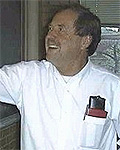Analysis of Techniques for Measuring Carrier Recombination Lifetime
Category
Published on
Abstract
Rapid, accurate and contactless measurement of the recombination lifetime is a very important activity in photovoltaics. The excess carrier lifetime (Δn(t)) is the most critical and variable parameter in the development of photovoltaic materials. Device performance can be accurately predicted from the lifetime measurement of the starting material. However, there is no single measurement that directly measures the bulk lifetime as all measurements are based on a device model.
A primary issue is that the lifetime is a function of excess carrier lifetime, and measurements must be linked to an injection level. The most common measurements are based on either photoconductive (PCD) or photoluminescence (TRPL) decay. PC decay senses the product of excess carrier concentration (Δn) and mobility (μ (Δn)). This mobility variation must be included in order to extract the true excess carrier lifetime. TRPL works best for direct band gap materials and therefore is not applicable to silicon. For polycrystalline materials, shallow traps distort the measurement and must be included in the analysis of the data. Finally, surface and interface recombination have profound influence on most measurements and must be minimized for accurate measurement of the true bulk lifetime.
Both techniques and analysis methods will be discussed in this seminar. Typical sample measurements will be shown, including representative thin film and wafer materials that are currently popular in the photovoltaic community.
Bio
 Dr. Richard K. Ahrenkiel is a Research Professor of Metallurgical and Materials Engineering at the Colorado School of Mines in Golden, Colorado. He is also a Consultant and Research Fellow Emeritus at the National Renewable Energy Laboratory (NREL), where he worked from 1981 to 2005. Prior to NREL, he worked at Eastman Kodak Research laboratories, and at the Los Alamos National Laboratory. Dr. Ahrenkiel’s area of specialization is the measurement and characterization of photovoltaic cells and materials, and he is one of the world experts in the area of carrier recombination and carrier lifetime. He invented a unique technique for measuring the excess carrier lifetime in materials. This technique, named Resonance-coupled photoconductive decay (RCPCD), has been extensively applied to silicon and non-silicon materials. Dr. Ahrenkiel received a B.S. degree in Engineering Physics and his M.S. and Ph.D. degrees in Physics at the University of Illinois, Urbana.
Dr. Richard K. Ahrenkiel is a Research Professor of Metallurgical and Materials Engineering at the Colorado School of Mines in Golden, Colorado. He is also a Consultant and Research Fellow Emeritus at the National Renewable Energy Laboratory (NREL), where he worked from 1981 to 2005. Prior to NREL, he worked at Eastman Kodak Research laboratories, and at the Los Alamos National Laboratory. Dr. Ahrenkiel’s area of specialization is the measurement and characterization of photovoltaic cells and materials, and he is one of the world experts in the area of carrier recombination and carrier lifetime. He invented a unique technique for measuring the excess carrier lifetime in materials. This technique, named Resonance-coupled photoconductive decay (RCPCD), has been extensively applied to silicon and non-silicon materials. Dr. Ahrenkiel received a B.S. degree in Engineering Physics and his M.S. and Ph.D. degrees in Physics at the University of Illinois, Urbana.
Sponsored by
npt (Network for Photovoltaic Technology), ncn (Network for Computational Nanotechnology), Discovery Park
Cite this work
Researchers should cite this work as follows:
Time
Location
Birck Technology Center, Room 1001, Purdue University, West Lafayette, IN